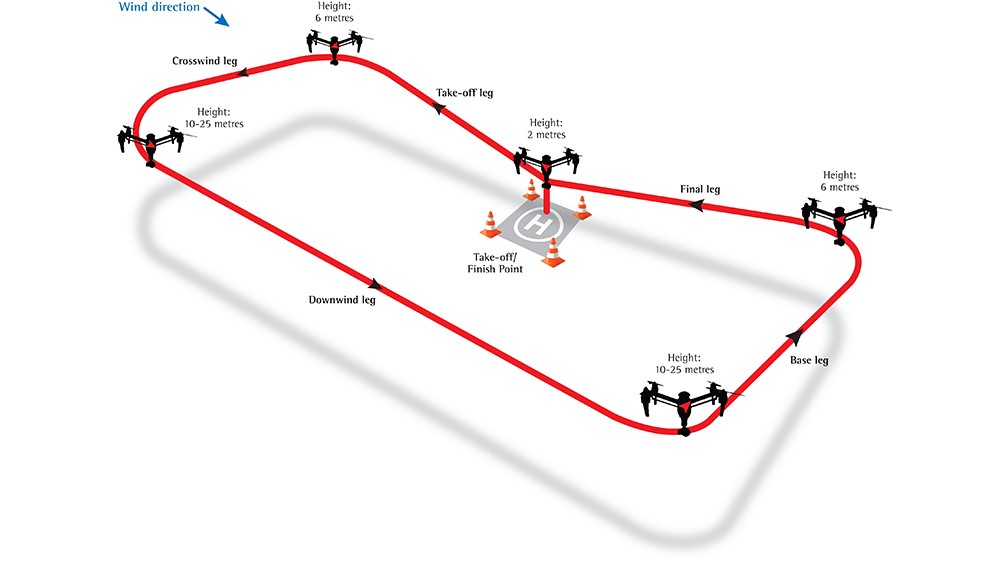
Flying Circuits
Circuits are the basic building blocks of flying. They combine all the flight manoeuvres used on operations.
All student fixed-wing and helicopter pilots ‘bash the circuits’ for many hours, perfecting flying skills. Airline pilots will fly circuits as part of their final line check examination before being released to fly commercially by the airline’s training captain.
Circuits test the ability to fly a predetermined pattern accurately and in a controlled manner. They include stopping, yawing through 90° and repetition of the sequence a number of times. At the end of the circuit, the UAS should be in exactly the same position as at the start. The exercise enables practising departing, climbing turns, level flight, descending turns and approaches back to the 2 metres hover above the take-off point. Practising these manoeuvres will develop ‘muscle memory’ and hone precision flying skills. Circuits should be practised at different heights and distances away from the remote pilot – starting by keeping the machine close to the pilot and working outwards as proficiency is developed.
The pilot should demonstrate:
• ability to compensate for the wind;• accurate height control.
• Call out: “ ” to the ground crew and team members:
• “Starting” – start the aircraft;
• “Lifting” – lift the aircraft to a height of 2 metres above the take-off area and perform control checks;
• “Departing” – depart at constant 45° angle at a constant speed;
• “Returning” – return to the same spot in the sky as departure, 2 metres above the landing area;
• “Landing” – land the aircraft and shut down the motors.